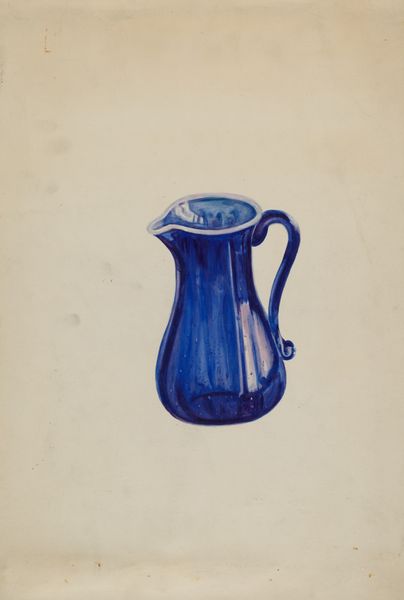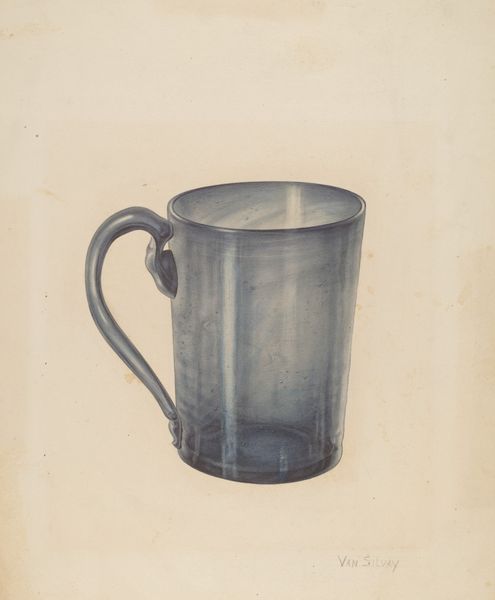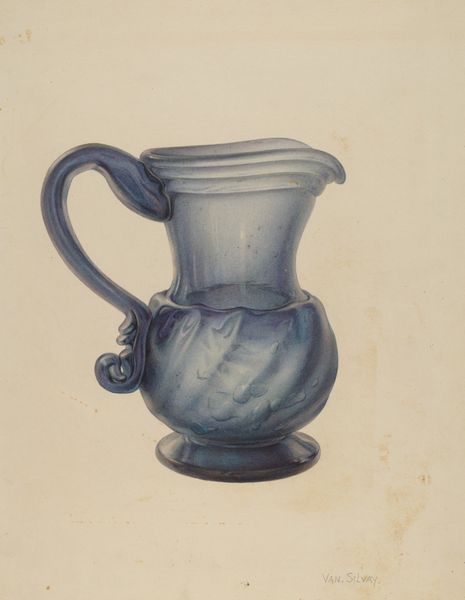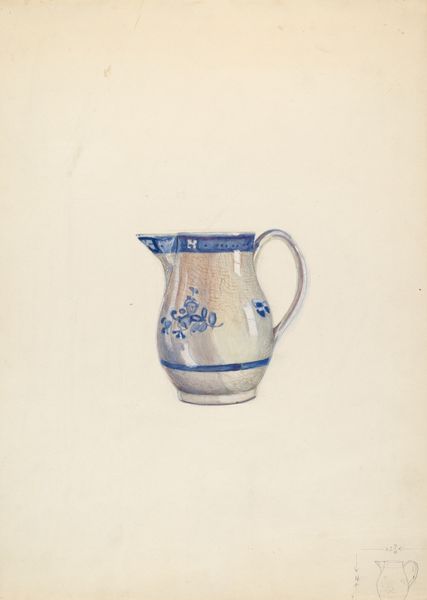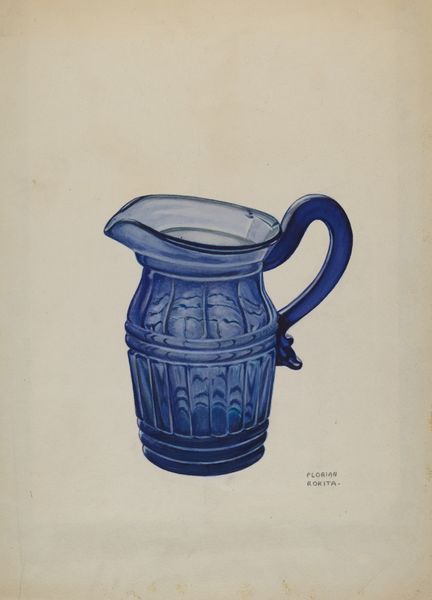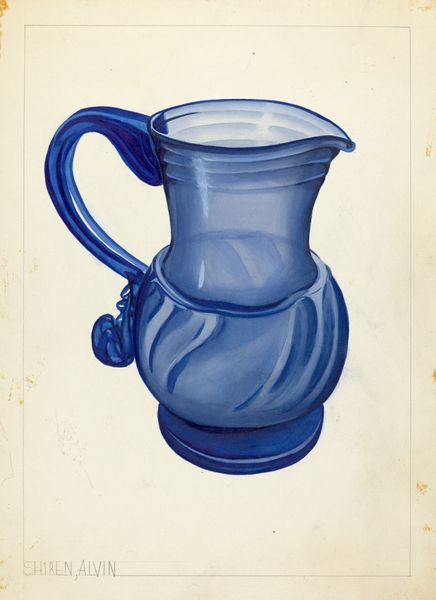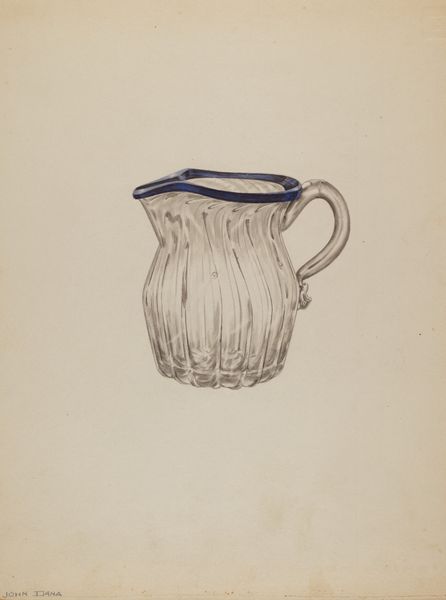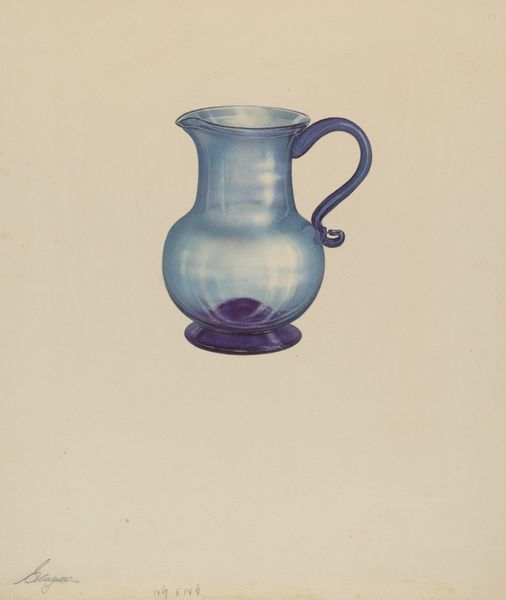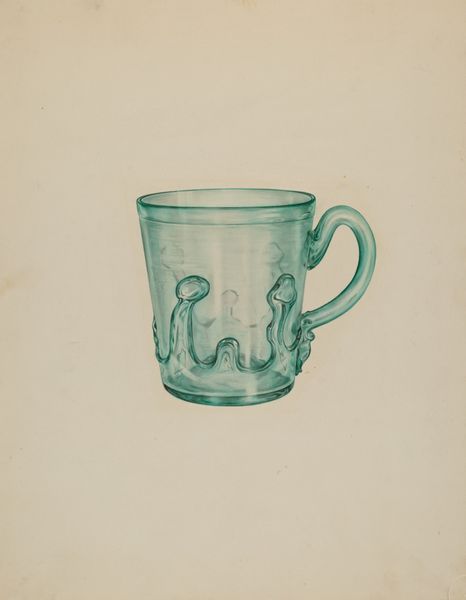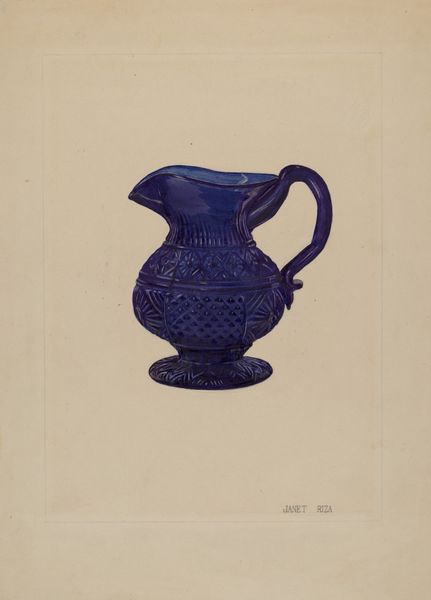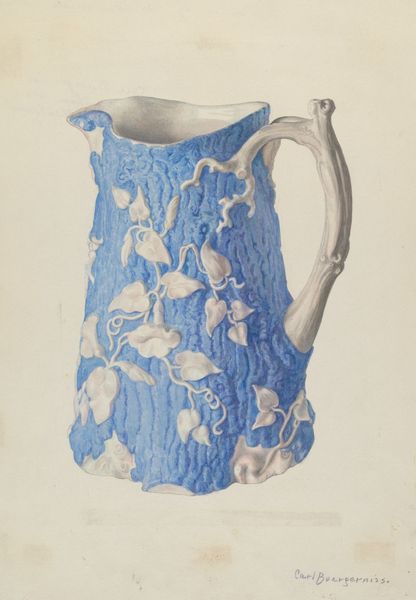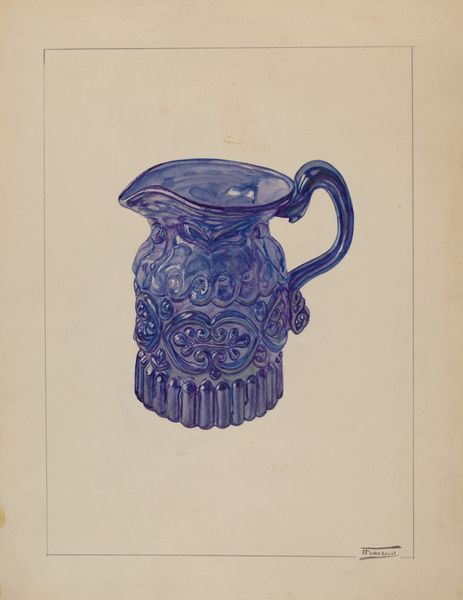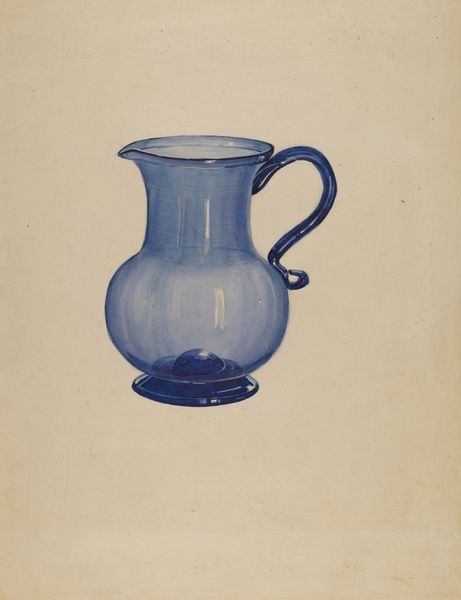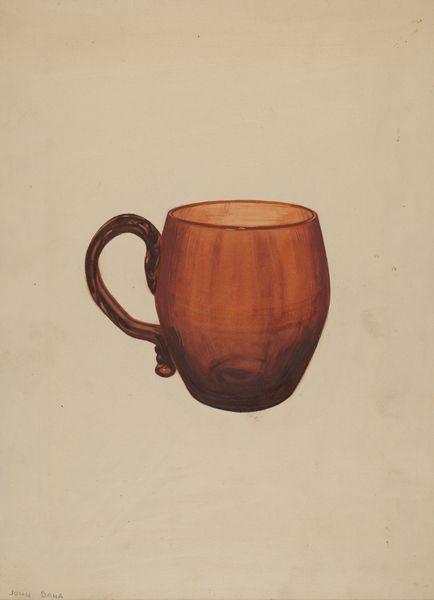
drawing, watercolor
#
drawing
#
negative space
#
watercolor
#
pencil drawing
#
geometric
#
watercolour illustration
#
modernism
#
watercolor
#
realism
Copyright: National Gallery of Art: CC0 1.0
Editor: This is "Early Sandwich Creamer," a watercolor and pencil drawing, created around 1936 by Ella Josephine Sterling. Curator: My initial feeling is... longing? That cobalt blue, and the almost painful detail. Someone clearly adored this piece of glass. Editor: Absolutely. Sterling's drawings offer an interesting insight into consumer culture during that period. These weren't high art; they were often commissioned as design records or product documentation. Museums used images such as this one for archiving, while manufactures would have used it to illustrate what they offered in catalogues, replacing older sample books with pages torn out, re-ordering their contents in the order the samples had been stored and unpacked, by pattern, etc. And for designers, an object like this would have served as a record of surface design or color combinations. Curator: It speaks to the democratizing potential of art, doesn't it? This wasn't just for elites. This image captured an object destined, perhaps, for an ordinary table, a daily ritual. Although ordinary to who? Now, in 2024, it could very much sit behind bulletproof glass. The past becomes exclusive! Editor: Well, access is a funny thing. In a way, mass production promised a wider distribution of beauty, although the production methods have never fully solved those issues. However, do you see anything beyond consumerism? It has an abstract almost mechanical vibe in spite of its old-fashioned function. Curator: You're right, that geometry. It feels like Sterling is playing with the light and shadow as much as the object itself. There’s a kind of detached admiration, I'd say. The translucence and colour variations, so precise and considered and also full of light, make one feel she really got deep into the subject Editor: Considering it’s rendered using watercolour on paper, she really gets the feeling of the object across and almost anticipates that, with care, those original surfaces can be carefully duplicated, for commercial production Curator: Like chasing the light that moves over it, and knowing this little cream pourer, with the passage of time, could someday inspire other kinds of illumination Editor: Absolutely. It reflects how art and design intertwine and, ultimately, how a simple creamer can hold so much history.
Comments
No comments
Be the first to comment and join the conversation on the ultimate creative platform.
